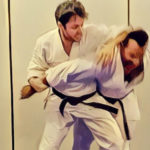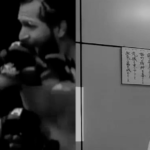“The number of individuals who really understand the nature of karate is extremely small. Furthermore, since karate is ever advancing, it is no longer possible to speak of the karate of today and the karate of a decade ago in the same breath. Accordingly, even fewer realize that karate in Tokyo today is almost completely different in form from what was earlier practiced in Okinawa”.
Gichin Funakoshi. Karate-do Nyumon (1943)
Old style karate is an expression widely used within the international community of karate researchers to refer to the type of karate that was practiced during the pre-modern period of the art, especially before the turn of the 19th to the 20th century, when the karate teaching came out of the secrecy, became widespread and was modernized. Among the main characteristics of old style karate are:
- In the technical standpoint it was completely geared towards realistic and effective self-defense. That is, old style karate involved only what would be useful for use in real life-threatening situations, leaving aside unrelated aspects, such as aesthetics or sports.
“What is karate? It is the art we exercise mind and body for health promotion in daily life, but in case of emergency it is the art of self-defence without any weapon. […] According to oral history, in the old days, the teaching policy of karate put emphasis on self-defence techniques.“
Chojun Miyagi. Historical Outline of Karate-Do: Martial Arts of Ryukyu (1936)
- Teaching was originally done individually or in very small groups, and in secrecy.
“At that time, the practice of karate was banned by the government, so sessions had to take place in secret, and pupils were strictly forbidden by their teachers to discuss with anyone the fact that they were learning the art.
[…] Men who were known to be adepts accepted a few pupils in secret, but their livelihood depended on work quite unrelated to karate”
Gichin Funakoshi. Karate-Do: My Way Of Life (1956)
- The kata were really at the center of the transmission and practice of the teachings of karate, and they were passed on along with the true understanding of their functioning. Thus, the kumite then practiced was directly based on the kata, but using their true (original) applications. This understanding was unfortunately lost during the transition from ancient to modern karate, but the research community has been striving to rescue these teachings. The study and decomposition of kata (bunkai) is certainly the most important aspect in the technical understanding of old karate, and Muidokan is respected internationally as one of the greatest sources for quality interpretation of kata according to ancient teachings.
“In days past, kata and kumite were said to be like wheels on a car.”
Ei’Ichi Miyazato. Okinawa Den Gojuryu Karate-Do (1978)
“Needless to say that kumite should not be independent and separated from kata, since every kata is applied in kumite. Therefore, sacrificing kata for the sake of kumite should never be allowed to happen.”
Gichin Funakoshi. Karate-Do Kyohan (1935)
Most of the other technical characteristics of old style karate stem from the first characteristic mentioned above — the art was meant to be used in real situations of self-defense. Thus, we cite other important characteristics:
- Old style karate is an eclectic art in terms of the types of fighting techniques used. There are grappling methods totally mixed with methods of impact, attacks on soft parts of the body (such as eyes, windpipe and testicles), methods of imbalance and throwing and more (some of these methods you can see in the video in the opening of this article). The close-range fighting aspect was emphasized, which is characteristic of the nature of self-defense confrontations.
“The principal lesson Sensei [Juhatsu Kyoda] emphasized was using “kake-ai;” the ability to use techniques in harmony with each other, especially in close-quarters. In the case of combative engagement distance being further away then it is best to avoid confrontation. Karate technique is a defensive skill used in close quarters and not meant to be used otherwise.”
Shigekazu Kanzaki, 3º soke of To’on-Ryu style, in an interview to Patrick McCarthy. IRKRS, 2001.
- There was also the fact that each practitioners ended up developing sort of their “own” style, always based on the kata they practiced (there were no modern styles yet — not even popular Okinawan styles such as Shorin-ryu, Goju-ryu and Uechi-ryu ). What works best for one practitioner does not necessarily work best for another practitioner. What a practitioner learned (most often from several different masters) was not necessarily the same as what a different practitioner would have learned. So it didn’t make sense for practitioners to have the same fighting style in real self-defense situations. Instead, each had their own way of fighting, their own strengths, and this was also reflected in the different versions that existed for each kata (and today we have inherited several hundred versions because of that fact).
A final aspect that I would like to emphasize is the fact that all the fundamental historical records of ancient karate show that art had a very important component of improving the quality of life of the practitioner, both physically and mentally. That is, training would have the extra benefit of improving health, prolonging life beyond the self-defense part, and making people happier and more at peace with the world. This remains a benefit of karate today (or at least sometimes), and the study of ancient karate contributes to bringing us closer to achieving this aspect of training.
Historically, different practitioners of old style karate called the art by different names — tī’gwa チィグァ, tī 手, tōdī 唐手, te 手, tōde 唐手, kenpō 拳法, etc. But a name I use most often is Ryūkyū Tōde or Ryūkyū Karate 琉球唐手 (both pronunciations are valid). That is, Tōde/Karate from the Ryūkyū Kingdom. It turns out that for most of the ancient karate period the Ryūkyū Kingdom was still active. At the end of the 19th century, this state was dissolved and transformed into the Japanese prefecture of Okinawa — around the same time that old karate transitioned to modern karate, and Ryūkyū Tōde was transformed into Karate-dō.
If you are interested in this subject, you will certainly enjoy reading more about it here in Muidokan website. We already have articles on fundamental tactical principles of old style karate, on fundamental technical principles, and also several videos of applications that were researched following the original teachings for bunkai, as for example here and here. Muidokan’s inaugural article also explains much more about the shift from ancient karate to modern karate.
If you like our content, please comment, like and share. Follow us on our social media (links at the top of this page). Karate is undergoing a revolution with the rediscovery of its true historical techniques. Be part of the karate revolution by helping to bring this information to more people. This process is inevitable — karate will never be the same. And you can be an active part of that restoration!
Thanks again for the support. Keep it up, and great training everyone!
Samir Berardo




Pingback: Fundamental technical concepts of old style karate – Muidokan Karate Kenkyukai